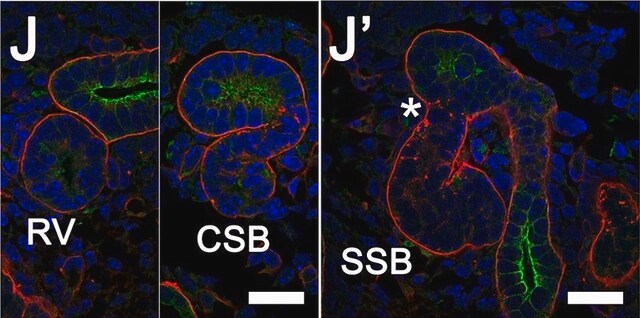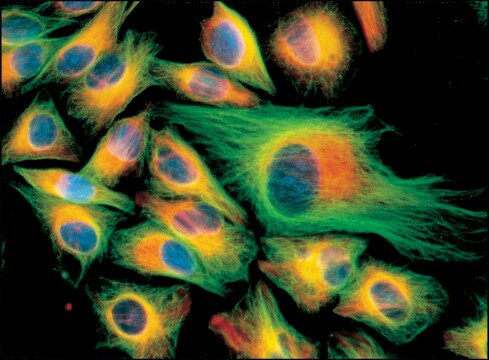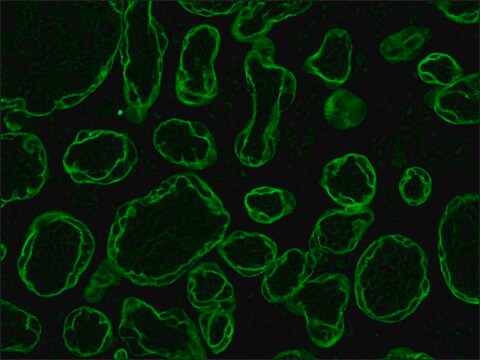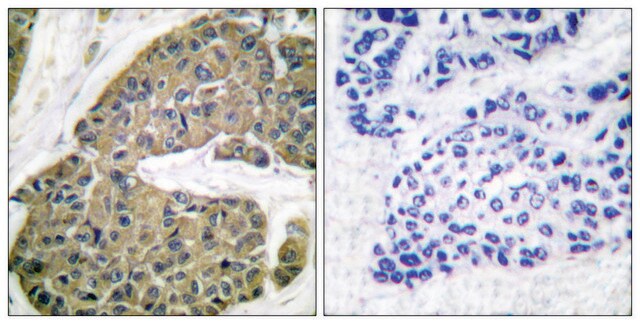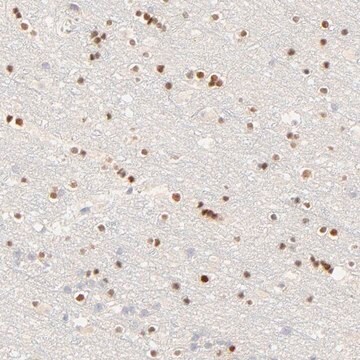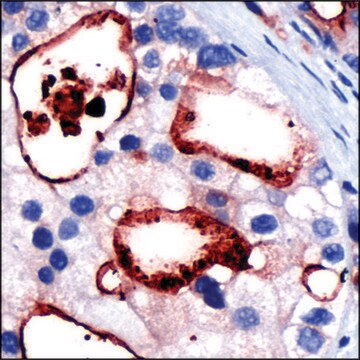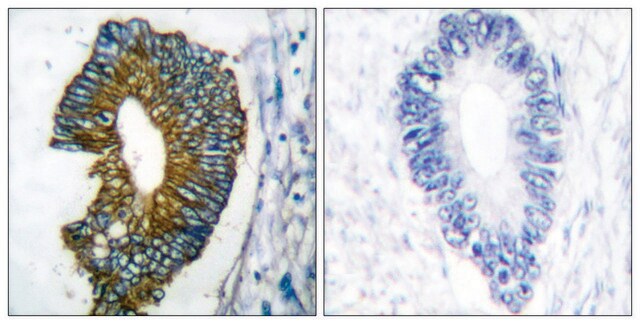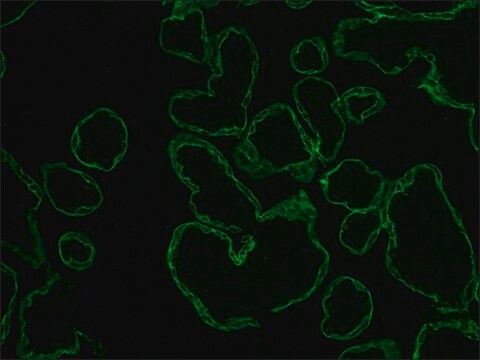Kluczowe dokumenty
P2871
Anti-Cytokeratin pan antibody, Mouse monoclonal
clone C-11, purified from hybridoma cell culture
Synonim(y):
Anti-CK-4, Anti-CK4, Anti-CYK4, Anti-K4, Anti-WSN1
About This Item
Polecane produkty
pochodzenie biologiczne
mouse
Poziom jakości
białko sprzężone
unconjugated
forma przeciwciała
purified from hybridoma cell culture
rodzaj przeciwciała
primary antibodies
klon
C-11, monoclonal
Formularz
buffered aqueous solution
metody
immunocytochemistry: 15-30 μg/mL using methanol/acetone-fixed PTK-2 cells or A549 - human lung carcinoma cells
immunohistochemistry (formalin-fixed, paraffin-embedded sections): 15-30 μg/mL using human skin
immunohistochemistry (frozen sections): suitable
microarray: suitable
western blot: suitable
Warunki transportu
dry ice
temp. przechowywania
−20°C
docelowa modyfikacja potranslacyjna
unmodified
Powiązane kategorie
Opis ogólny
Zastosowanie
Działania biochem./fizjol.
Postać fizyczna
Oświadczenie o zrzeczeniu się odpowiedzialności
Nie możesz znaleźć właściwego produktu?
Wypróbuj nasz Narzędzie selektora produktów.
Kod klasy składowania
10 - Combustible liquids
Klasa zagrożenia wodnego (WGK)
WGK 2
Temperatura zapłonu (°F)
Not applicable
Temperatura zapłonu (°C)
Not applicable
Środki ochrony indywidualnej
Eyeshields, Gloves, multi-purpose combination respirator cartridge (US)
Wybierz jedną z najnowszych wersji:
Masz już ten produkt?
Dokumenty związane z niedawno zakupionymi produktami zostały zamieszczone w Bibliotece dokumentów.
Nasz zespół naukowców ma doświadczenie we wszystkich obszarach badań, w tym w naukach przyrodniczych, materiałoznawstwie, syntezie chemicznej, chromatografii, analityce i wielu innych dziedzinach.
Skontaktuj się z zespołem ds. pomocy technicznej